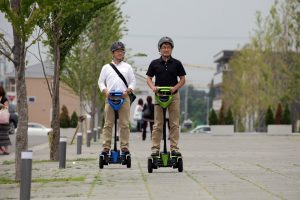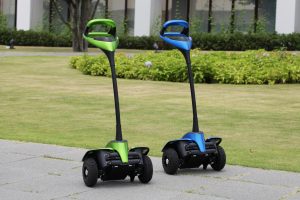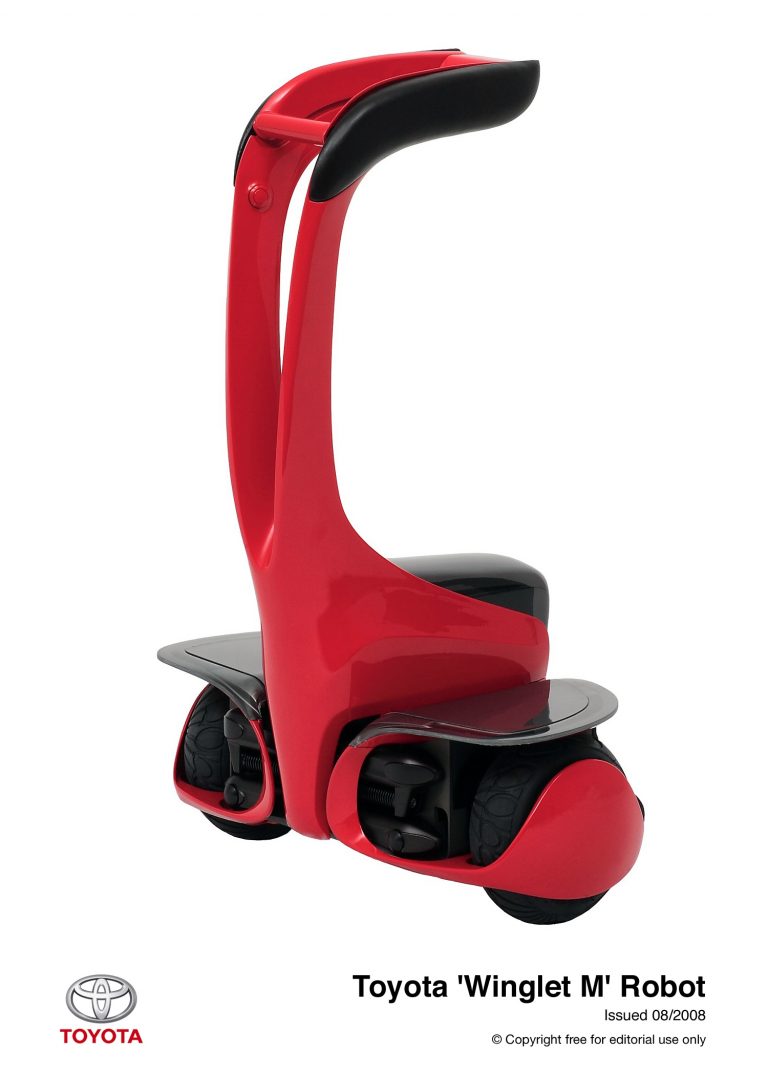TOYOTA WINGLET TAKES TO THE STREETS
KEY POINTS
- First public trials of Toyota’s Winglet mobility assistance robot
- Three-year programme launched in Tsukuba, a science and environment city in Japan
- Winglet will be assessed for safety, convenience, practicality and public reaction
- Zero-emissions thanks to lithium-ion battery power
- Range of up to six miles, maximum speed 3.5mph
Winglet will be tested on the city’s pavements to assess its safety and practicality for moving among pedestrians. The trial will continue until March 2016, with the emphasis in the first year being safety and from 2014 on functionality, convenience and prospective public demand.
It will be used by 80 local authority workers and employees of the National Institute of Advanced Industrial Science and Technology in a part of the city that has been hosting mobility robot test programmes since 2011.
Toyota first presented Winglet in 2008. It is a compact, lightweight two-wheeled machine that is ridden in a standing position and manoeuvred using a long, vertical T-bar handle. The handle is adjustable, so people of all heights can use the machine. When not in use, Winglet can simply be folded up and carried.
Winglet is powered by a lithium-ion battery and has a range of about six miles (10km) on a full charge. Top speed is around 3.5mph (6km/h), and battery charging takes an hour. Performance is emissions-free, so Winglet is also suitable for use in some indoor environments, for example in airports or office complexes.
ENDS





